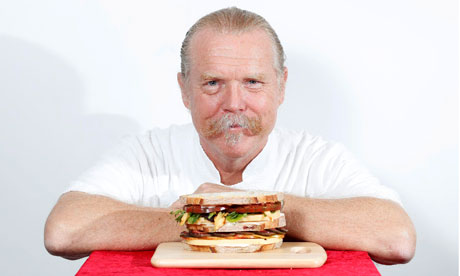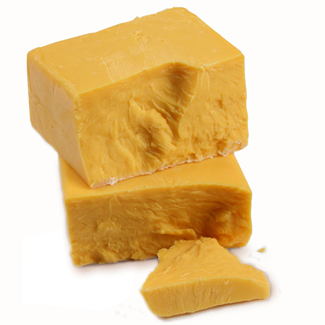
This weekend, C:AJ had a potluck to go to, and we decided to bring a pie. Not a regular pie, though-- a CHEESEY pie.
As we've
talked about before on this blog, cheese and apple pie are a common pair. In fact, many restaurants in Wisconsin, including The Old Fashioned on the square in Madison, serve their apple pie with a slice of cheddar cheese. The pie that we made got a bit more fancy than that and incorporated cheese into the crust.
For those of you who want to try this out, remember that when you're making a pie crust, try to handle the dough as little as possible and only add enough water to just keep the dough together. Also, using half shortening and half butter is important for the perfect combo of flakiness and deliciousness, so don't substitute! One last tip: you can roll the crust out between two pieces of wax/parchment paper, which is much less messy and easier than flouring the surface of a table.
Here's the recipe (
directly from epicurious) and some pictures of the pie in progress!
INGREDIENTSCrust2 1/2 cups all purpose flour
1 tablespoon sugar
1/2 teaspoon salt
1/2 cup (1 stick) chilled unsalted butter, cut into 1/2-inch cubes
6 tablespoons chilled pure vegetable shortening, cut into 1/2-inch cubes
1 cup (firmly packed) coarsely grated sharp cheddar cheese
5 tablespoons (or more) ice water
Filling1/3 cup sugar
1 1/2 tablespoons cornstarch
6 6- to 7-ounce Jonathan, Jonagold, or Golden Delicious apples, peeled, cored, thinly sliced
1 tablespoon fresh lemon juice
Pinch of salt
2 tablespoons (1/4 stick) chilled unsalted butter, diced
INSTRUCTIONSFor crust:Place flour, sugar, and salt in processor; blend 5 seconds. Add butter and shortening. Using on/off turns, blend until mixture resembles fine meal. Add cheese; mix in using 4 on/off turns. Transfer dry ingredients to large bowl. Sprinkle 5 tablespoons water over. Using fork, toss until moist clumps form, adding more water by tablespoonfuls if mixture is dry. Gather dough into ball; divide in half. Shape each half into disk. Wrap in plastic and chill at least 1 hour and up to 1 day.
For filling:Preheat oven to 400°F. Mix sugar and cornstarch in large bowl. Mix in apples, lemon juice, and salt.
Roll out 1 dough disk on lightly floured surface to 13-inch round. Transfer dough to 9-inch-diameter deep-dish glass pie dish; brush overhang with water. Transfer filling to dough-lined dish; dot with butter. Roll out second dough disk on lightly floured surface to 12-inch round. Place dough atop filling. Press overhang of bottom and top dough pieces together to seal. Trim overhang to 1/2 inch. Fold overhang under; crimp decoratively, forming high-standing rim. Cut several small slits in top crust to allow steam to escape.
Bake pie until golden brown, about 30 minutes. Cover crust edge with foil. Reduce oven temperature to 375°F. Bake pie until filling bubbles thickly in center, about 30 minutes. Cool pie on rack 1 hour. Serve warm or at room temperature.


P.S. The pie was a hit!











































